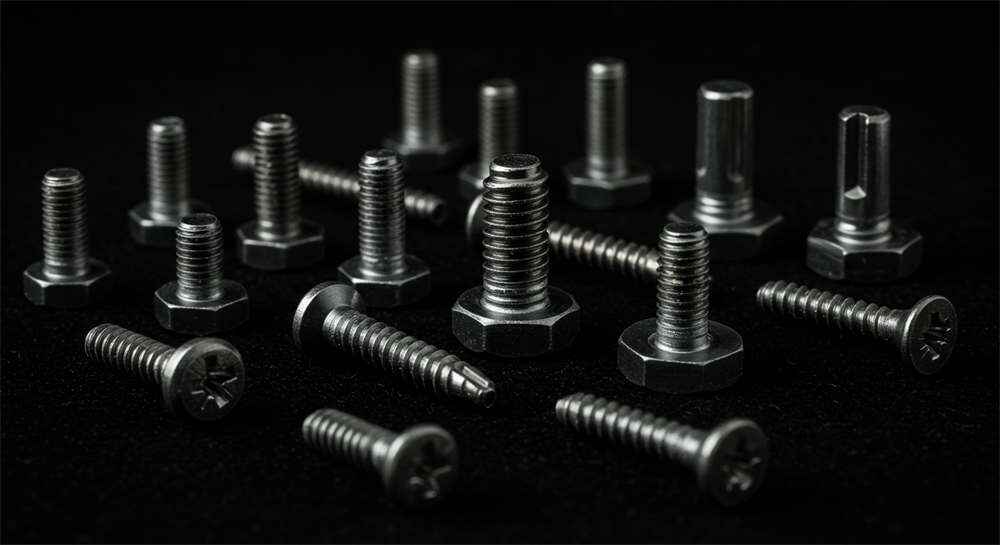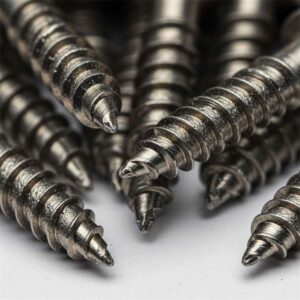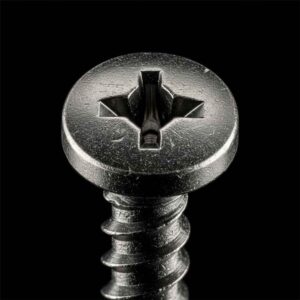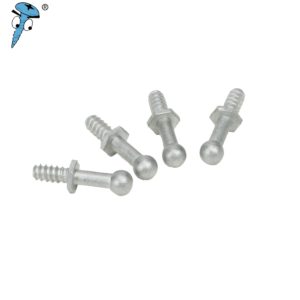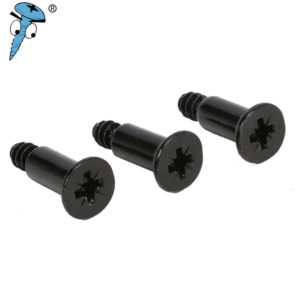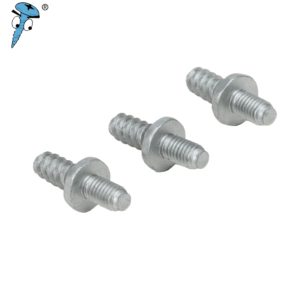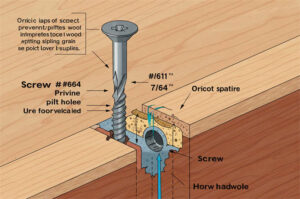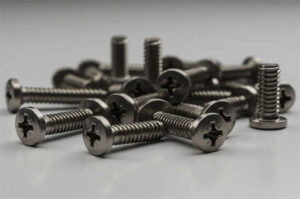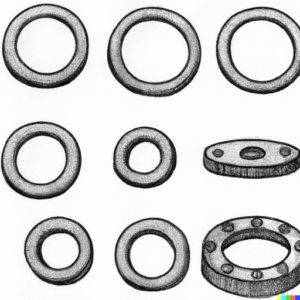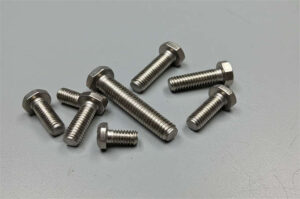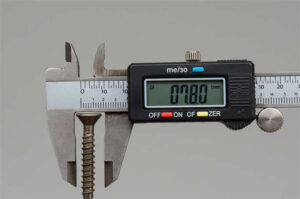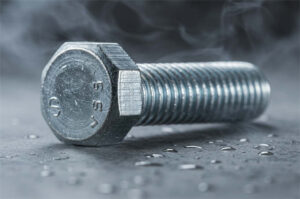You need good charts to check machine screw dimensions quickly. Most people use ISO metric screws. However, in the United States, Liberia, or Myanmar, you may encounter imperial sizes.
| Screw Size Standard | Prevalence | Region of Use |
|---|---|---|
| ISO Metric | High | Worldwide |
| Imperial | Low | United States, Liberia, Myanmar |
| Mixed Approach | Moderate | United Kingdom, Canada |
You save time and make fewer mistakes with the right information.
Key Takeaways
- Use machine screw size charts to quickly find the right dimensions for your projects. This saves time and reduces mistakes.
- Always check both the diameter and threads per inch when selecting screws. Two screws may look similar but can have different thread patterns.
- Keep downloadable charts handy for quick reference. They help ensure you choose the correct screw size and type for every job.
Machine Screw Size Charts
You often need to check machine screw dimensions quickly. This section gives you the most important charts and tables for both imperial and metric screws. You will also find a handy conversion table to help you match sizes across systems.
UTS (Imperial) Sizes
The Unified Thread Standard (UTS) sets the rules for screw threads in the United States and Canada. It covers two main thread series: UNC (Unified National Coarse) and UNF (Unified National Fine). You use UNC for general work and UNF for applications needing a tighter fit. These standards help you avoid confusion and ensure compatibility.
Here is a chart showing the most common US machine screw sizes from #0 to #14. You can see the nominal size, threads per inch, major diameter, pitch diameter, and tolerances.
| Nominal Size | Threads per Inch | Major Diameter Max (in) | Major Diameter Min (in) | Pitch Diameter Max (in) | Pitch Diameter Min (in) | Tolerance (in) |
|---|---|---|---|---|---|---|
| 0-80 | 80 | 0.0595 | 0.0563 | 0.0514 | 0.0496 | 0.0018 |
| 1-64 | 64 | 0.0724 | 0.0686 | 0.0623 | 0.0603 | 0.0020 |
| 1-72 | 72 | 0.0724 | 0.0689 | 0.0634 | 0.0615 | 0.0019 |
| 2-56 | 56 | 0.0854 | 0.0813 | 0.0738 | 0.0717 | 0.0021 |
| 2-64 | 64 | 0.0854 | 0.0816 | 0.0753 | 0.0733 | 0.0020 |
| 3-48 | 48 | 0.0938 | 0.0938 | 0.0848 | 0.0825 | 0.0023 |
| 3-56 | 56 | 0.0983 | 0.0942 | 0.0867 | 0.0845 | 0.0022 |
| 4-40 | 40 | 0.1112 | 0.1061 | 0.0950 | 0.0925 | 0.0025 |
| 4-48 | 48 | 0.1113 | 0.1068 | 0.0978 | 0.0954 | 0.0024 |
| 5-40 | 40 | 0.1242 | 0.1191 | 0.1080 | 0.1054 | 0.0026 |
| 5-44 | 44 | 0.1243 | 0.1195 | 0.1095 | 0.1070 | 0.0025 |
| 6-32 | 32 | 0.1372 | 0.1312 | 0.1169 | 0.1141 | 0.0028 |
| 6-40 | 40 | 0.1372 | 0.1321 | 0.1210 | 0.1184 | 0.0026 |
| 8-32 | 32 | 0.1631 | 0.1571 | 0.1428 | 0.1399 | 0.0029 |
| 8-36 | 36 | 0.1632 | 0.1577 | 0.1452 | 0.1424 | 0.0028 |
Tip: Always check both the diameter and the threads per inch. Two screws can look the same but have different threads.
Metric Sizes
Metric machine screw dimensions follow ISO and DIN standards. You see sizes like M1.6, M2, M3, and so on, up to M68. The first number is the major diameter in millimeters. The second number, if shown, is the thread pitch. Most general-purpose screws use coarse pitch.
| Standard | Description | Size Range |
|---|---|---|
| DIN 13-1 | ISO general purpose metric screw threads – Part 1: Nominal sizes for coarse pitch threads | M1.6 to M68 |
| DIN 13-20 | ISO general purpose metric screw threads – Part 20: Limits of sizes for coarse pitch threads | M1.6 to M68 |
| DIN 376 | Covers machine screwing taps for coarse pitch metric ISO-threads M1.6 to M68 | M1.6 to M68 |
Here are some common metric screw sizes with their tolerance classes:
| Thread Size | Tolerance Class | Maximum Outside Diameter | Pitch Diameter |
|---|---|---|---|
| M1.6 | 6g | 1.6 mm | 1.4 mm |
| M2.0 | 6g | 2.0 mm | 1.7 mm |
| M3.0 | 6g | 3.0 mm | 2.5 mm |
Note: ISO 965 sets the tolerance classes. Most screws use 6H or 6g for a good balance of fit and strength.
You may notice small differences between ISO and DIN screws. Usually, you can swap them, but sometimes the head shape or countersink angle will not match perfectly. Always check the machine screw dimensions for your project.
Conversion Table
When you work on projects that mix US and metric parts, you need a conversion table. This helps you match the closest sizes and avoid mistakes.
| Screw Size | Inch Decimal | Nearest Fraction | Metric Equivalent |
|---|---|---|---|
| #0 | 0.060 in. | 1/16″ | 1.52 mm |
| #1 | 0.073 in. | 5/64″ | 1.85 mm |
| #2 | 0.086 in. | 3/32″ | 2.18 mm |
| #3 | 0.099 in. | 7/64″ | 2.51 mm |
| #4 | 0.112 in. | 7/64″ | 2.84 mm |
| #5 | 0.125 in. | 1/8″ | 3.18 mm |
| #6 | 0.138 in. | 9/64″ | 3.51 mm |
| #8 | 0.164 in. | 5/32″ | 4.17 mm |
| #10 | 0.190 in. | 3/16″ | 4.83 mm |
| #12 | 0.216 in. | 7/32″ | 5.49 mm |
| #14 | 0.250 in. | 1/4″ | 6.35 mm |
| 1/4″ | 0.250 | 6.35 mm | |
| 5/16″ | 0.3125 | 7.94 mm | |
| 3/8″ | 0.375 | 9.53 mm | |
| 7/16″ | 0.4375 | 11.11 mm | |
| 1/2″ | 0.500 | 12.70 mm | |
| 9/16″ | 0.5625 | 14.29 mm | |
| 5/8″ | 0.625 | 15.88 mm | |
| 3/4″ | 0.750 | 19.05 mm | |
| 7/8″ | 0.875 | 22.23 mm | |
| 1″ | 1.000 | 25.40 mm |
Tip: When you convert, always round to the nearest standard size. Test the screw in a scrap piece before using it in your final project.
Common Conversion Mistakes
- Rounding errors can cause problems. For example, M6 and 1/4″ look close, but their threads do not match.
- Screws may look the same, but the thread pitch can be different. Always check both the diameter and the pitch.
- Metric screws use the distance between threads (pitch), while imperial screws use threads per inch (TPI).
You can avoid these mistakes by using the charts above and double-checking your machine screw dimensions every time.
Machine Screw Dimensions Explained
Chart Columns Overview
When you look at a machine screw size chart, you see several columns. Each column gives you important details about the screw. Here is a table that explains what each measurement means and why it matters for compatibility:
| Measurement | Description |
|---|---|
| Nominal Size | Shows the common reference size, based on the outer diameter of the threads. |
| Body Diameter | Tells you the actual diameter range of the screw shank. |
| Width Across Flats | Measures the distance across the flat sides of the head for wrench fit. |
| Width Across Corners | Gives the diagonal distance across the head, useful for tight spaces. |
| Head Height | Shows the height of the screw head, important for clearance. |
| Thread Length | Indicates how much of the screw has threads, which can vary by use. |
| Max & Min | Lists the range of measurements for industry standards. |
| Ref | Provides reference dimensions for information only. |
You also see columns for threads per inch, major diameter, pitch diameter, and tolerances. These help you check if the screw will fit your project. For example, the major diameter is the largest part of the thread, while the pitch diameter is the average diameter where the threads meet.
Thread classes show how tight or loose the fit will be. Most commercial screws use Class 2 for a good balance of cost and performance.
How to Use Size Charts
You use machine screw dimensions charts to pick the right screw for your job. Start by matching the nominal size and threads per inch to your needs. Check the major and pitch diameters to make sure the screw fits the hole or nut. Always look at the tolerance range for a secure fit.
- Use the chart to compare metric and imperial sizes.
- Test the screw in a sample before final installation.
- Choose the right thread class for your project. Class 2 works for most jobs.
Tip: Always double-check machine screw dimensions before you buy or install. This helps you avoid costly mistakes and ensures your project works as planned.
Specialty Screw Tables
Fine vs. Coarse Threads
When you pick machine screws, you choose fine or coarse threads. Fine threads are called UNF. They have more threads in each inch. Coarse threads are called UNC. They have fewer threads per inch. Each type is good for different jobs.
| Thread Type | Pitch Type | Strength | Application Suitability |
|---|---|---|---|
| UNF | Fine | Higher tensile strength, better sealing | High-pressure, vibration-sensitive applications |
| UNC | Coarse | Lower load-carrying capacity | General-purpose, maintenance-intensive systems |
Fine threads are stronger and do not loosen easily. They work well when there is a lot of shaking or pressure. Coarse threads are simple to put in and take out. They hold better in soft materials and do not strip as fast. People use coarse threads for building or fixing things.
Tip: Use fine thread screws for thin parts or when you need to stop shaking. Use coarse thread screws for soft materials.
Head and Drive Types
Machine screws have many head and drive types. The head shape changes how the screw sits on a surface. The drive type tells you what tool you need.
| Head Type | Description | Common Uses |
|---|---|---|
| Pan | Slightly rounded top, flat underside | General use, electronics |
| Flat | Countersunk, flat top | Flush finishes, furniture |
| Hex | Six-sided, flat head | Industrial, construction |
| Button | Low profile, rounded top | Appliances, assemblies |
| Fillister | Tall, rounded top | Older equipment, low torque |
| Cheese | Tall, flat top | Machinery, frequent removal |
| Bugle | Curved taper, flat top | Drywall, wood |
| Binder | Thick, flat head | Electrical, wire space |
| Thumb | Wide, easy to grip | Hand-tightening, panels |
Drive types are slotted, Phillips, hex, Torx, and tamper-resistant. Male drives, like hex heads, use a wrench. Female drives, like Phillips or slotted, use screwdrivers. Some drives, like Torx or tamper-resistant, stop people from taking them out and let you use more force.
You should pick the right head and drive type for your job. This helps the screw fit and work well. Always check the screw size and head style before you start.
Downloadable Charts
It is smart to keep machine screw size charts nearby. Downloadable charts help you check screw sizes fast. You do not need the internet to use them. These charts show things like major and minor diameters. They also list pitch and threads per inch. Using standard charts helps your screws fit every time. This stops mistakes and saves time on your projects.
PDF Reference
You might want a PDF you can print for your toolbox. Many trusted places have up-to-date PDF charts. These charts follow rules like ANSI, ISO, and Whitworth. The tables are clear and used by professionals. Here are some places to find good PDF charts:
- Manufacturer websites (like McMaster-Carr, Fastenal, or Grainger)
- Standards groups (ANSI, ISO, DIN)
- Engineering handbooks and guides
- Online libraries and learning sites
Tip: Make sure your PDF chart uses the newest standards. This keeps your work correct and current.
Image Reference
Some people like image charts for quick checks on their phone. Image charts are easy to save and share with others. They help you check screw sizes when you are not at your desk. Many websites and books have good images of screw size tables. You can also take a picture of a chart and keep it on your device.
Note: Downloadable charts help you match fasteners from different brands. This cuts down on mistakes and makes your work quicker and more dependable.
You get help from screw size charts that are easy to find. These charts let you:
- Pick the right gauge, diameter, and length for your job.
- Stop guessing and avoid problems with your hardware.
- Make sure your work is strong and lasts a long time.
Are you hanging a heavy mirror? Using the correct screw size and type keeps it safe. Save or print these charts so you have them for every project.
FAQ
What is the difference between UNC and UNF threads?
UNC threads have fewer threads per inch. You use them for general work. UNF threads have more threads per inch. They fit tighter and resist vibration.
How do you measure a machine screw?
You measure the diameter across the threads. You also check the length from the flat part of the head to the tip. Use a ruler or caliper.
Can you mix metric and imperial screws?
You should not mix them. Metric and imperial screws have different thread patterns. Mixing them can damage your parts or cause the screw to fail.
